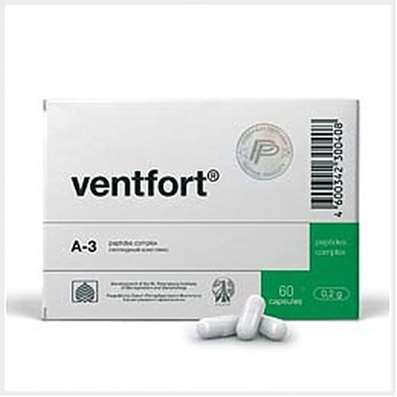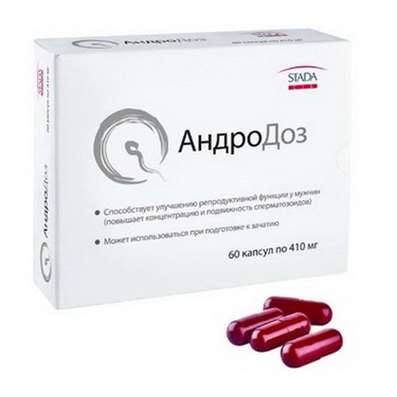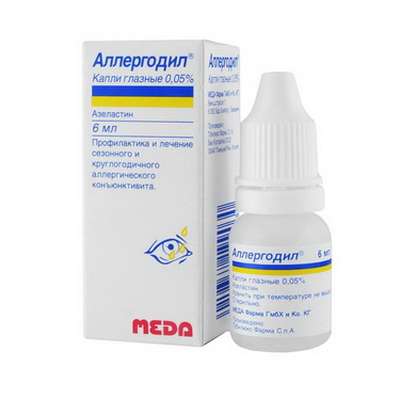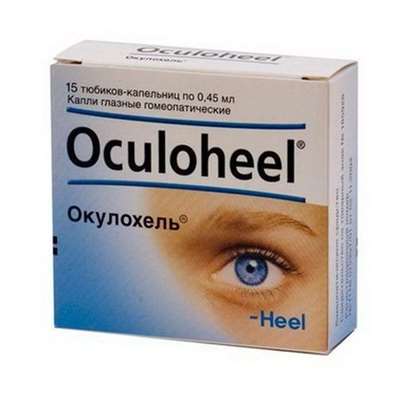Instruction for use: Valsaforce
I want this, give me price
Dosage form: coated tablets
Active substance: Valsartanum
ATX
C09CA03 Valsartan
Pharmacological group
Angiotensin II receptor antagonist [Angiotensin II receptor antagonists (AT1-subtype)]
Nosological classification (ICD-10)
I10 Essential (primary) hypertension: hypertension; Arterial hypertension; Arterial hypertension crisis course; Essential Hypertension; Essential hypertension; Essential hypertension; Essential hypertension; Essential hypertension; Primary hypertension; Arterial hypertension, complications of diabetes; The sudden increase in blood pressure; Hypertensive disorders of blood circulation; hypertensive condition; hypertensive crises; arterial Hypertension; malignant Hypertension; Hypertonic disease; hypertensive crises; accelerated hypertension; malignant hypertension; The aggravation of hypertensive disease; Transient hypertension; Isolated systolic hypertension
I15 Secondary hypertension: Arterial hypertension, complications of diabetes; hypertension; The sudden increase in blood pressure; Hypertensive disorders of blood circulation; hypertensive condition; hypertensive crises; hypertension; arterial Hypertension; malignant Hypertension; hypertensive crises; accelerated hypertension; malignant hypertension; The aggravation of hypertensive disease; Transient hypertension; hypertension; Arterial hypertension; Arterial hypertension crisis course; renovascular hypertension; Hypertension symptomatic; Renal hypertension; Renovascular hypertension; renovascular hypertension; Symptomatic hypertension
I15.0 Renovascular Hypertension: Hypertensive Crisis; Renovascular diseases; Malignant hypertension; Isolated systolic hypertension
I50.0 Congestive heart failure: anasarca heart; Decompensated congestive heart failure; Congestive heart failure; Congestive heart failure with high afterload; Congestive chronic heart failure; Cardiomyopathy with severe chronic heart failure; Compensated chronic heart failure; Swelling with circulatory failure; Edema of cardiac origin; Swelling of the heart; Edematous syndrome in diseases of the heart; Edematous syndrome in congestive heart failure; Edematous syndrome in heart failure; Edematous syndrome in heart failure or liver cirrhosis; right ventricular failure; Congestive Heart Failure; Heart failure stagnant; Heart failure with low cardiac output; Heart failure is a chronic; Cardiac edema; Chronic decompensated heart failure; Chronic Congestive Heart Failure; Chronic heart failure; Change of liver function in heart failure
Composition
Tablets covered with a film coating.
active substance: Valsartan 80 mg; 160 mg
Auxiliary substances: lactose monohydrate (sugar milk) - 17,7 / 35,4 mg; Potato starch - 31.52 / 63.04 mg; Povidone low molecular weight (PVP low molecular weight medical 12600 ± 2700) - 3.2 / 6.4 mg; Magnesium stearate - 1.6 / 3.2 mg; Talc - 4.8 / 9.6 mg; Silicon dioxide colloid (aerosil) - 3.2 / 6.4 mg; MCC - 12.8 / 25.6 mg
Membrane film: hypromellose (hydroxypropylmethylcellulose or hydroxypropylmethylcellulose) - 1.92 / 3.84 mg; Titanium dioxide - 1,6 / 3,2 mg; Macrogol 4000 - 1,5 / 3 mg (polyethylene glycol 4000); Tropeolin 0 - 0.16 / 0.32 mg
Description of dosage form
Tablets: round, biconvex, covered with a film coating of yellow color.
Pharmachologic effect
Mode of action - antihypertensive.
Pharmacodynamics
The active hormone RAAS is angiotensin II, which is formed from angiotensin I with the participation of ACE. Angiotensin II binds to specific receptors located on cell membranes in various tissues. It has a wide range of physiological effects, including, in particular, both direct and indirect participation in the regulation of blood pressure. Being a potent vasoconstrictor, angiotensin II causes a direct pressor response. In addition, it promotes sodium retention and stimulates the secretion of aldosterone.
Valsartan - a specific antagonist of angiotensin II receptors, intended for oral administration. It has a selective antagonistic effect on the AT1 receptor subtype, which is responsible for the known vascular effects of angiotensin II.
The consequence of the blockade of AT1-receptors is an increase in the plasma concentration of angiotensin II, which can stimulate unblocked AT2 receptors. Has no agonistic activity against AT1 receptors. The affinity of valsartan for AT1 receptors is about 20,000 times higher than for AT2 receptors.
In the treatment of valsartan in patients with arterial hypertension, there is a decrease in blood pressure, not accompanied by a change in the pulse rate. The onset of antihypertensive action is observed 2 hours after taking a single dose, and a maximum after 4-6 hours; The duration of action is more than 24 hours. For repeated prescriptions of the drug, the maximum decrease in blood pressure, regardless of the dose taken, is usually achieved within 2-4 weeks and is maintained at the achieved level during prolonged therapy.
There is no withdrawal syndrome with sudden discontinuation of admission.
Pharmacokinetics
After intake, absorption is rapid, but the degree of absorption varies widely. The average absolute bioavailability of valsartan is 23%.
The pharmacokinetic curve has a downward multiexponential character (T1 / 2 in the α-phase - <1 h and T1 / 2 in the β-phase - about 9 h).
In the range of doses studied, the kinetics of valsartan is linear. With repeated use of the drug, no changes in the kinetic parameters were noted. When taking the drug once a day, cumulation is negligible. Plasma concentrations in women and men were similar.
Valsartan is largely (94-97%) bound to serum proteins, mainly albumin. Vss - low (about 17 liters). In comparison with the hepatic blood flow (about 30 l / h) the plasma clearance of valsartan occurs relatively slowly (about 2 l / h). It is excreted by the intestine - 70%, by the kidneys - 30%, mostly unchanged.
Pharmacokinetics in selected groups of patients
Patients of advanced age. In some elderly patients, the systemic effect of valsartan was somewhat more pronounced than in young patients, but no clinical significance of this was shown.
Patients with impaired renal function. There was no correlation between renal function and systemic exposure to valsartan, which was to be expected, given that for this substance, the kidney clearance is only 30% of the total clearance value. Therefore, in patients with impaired renal function, dose adjustment is not required. However, valsartan has a high degree of binding to blood plasma proteins, so its elimination in hemodialysis is unlikely.
Patients with impaired liver function. About 70% of the amount of absorbed dose of the drug is excreted with bile, mostly unchanged. Valsartan does not undergo significant biotransformation, and, as can be expected, systemic exposure to valsartan does not correlate with the extent of hepatic impairment. Therefore, in patients with hepatic insufficiency of non-biliary origin and in the absence of cholestasis, no adjustment of the dose of the drug is required.
Indications of the drug Valsaforce
arterial hypertension;
Chronic heart failure (II-IV functional class according to NYHA classification) in patients receiving standard therapy, incl. Diuretics, cardiac glycosides, as well as ACE inhibitors or β-blockers (not simultaneously). The use of each of these drugs is not mandatory.
Contraindications
Hypersensitivity to any of the components of the drug;
Severe violations of the liver (biliary cirrhosis, cholestasis);
Lactose intolerance, lactase deficiency, glucose-galactose malabsorption syndrome;
pregnancy;
Lactation period;
Age to 18 years (effectiveness and safety not established).
With caution: bilateral stenosis of the renal arteries; Stenosis of the artery of a single kidney; With a diet with a limited intake of sodium; Conditions, accompanied by a decrease in BCC (including diarrhea, vomiting); Light and moderate disturbance of liver function of non-biliary origin, without cholestasis against the background of obstruction of the biliary tract; Renal failure (Cl creatinine less than 10 ml / min); hemodialysis; After kidney transplantation; Hyperaldosteronism; Aortic and mitral stenosis; Hypertrophic cardiomyopathy.
Application of pregnancy and breastfeeding
The use of the drug in pregnancy is contraindicated. In case of pregnancy during treatment, the drug should be discarded. During lactation, breastfeeding should be stopped.
Side effects
Frequency of side effects: very often - ≥1 / 10; Often - ≥1 / 100, <1/10; Infrequently - ≥1 / 1000, <1/100; Rarely - ≥1 / 10000, <1/1000; Very rarely - <1/10000, including individual messages.
From the side of the central nervous system: often - dizziness, incl. Postural; Infrequently - headache, vertigo, insomnia; Rarely - a syncope (when used after a heart attack).
On the part of the respiratory system: often - upper respiratory tract infections, pharyngitis, rhinitis, sinusitis; Infrequently - cough.
On the part of the CAS: often - a pronounced decrease in blood pressure and orthostatic hypotension; Rarely (if used after a heart attack) - heart failure.
From the side of the digestive system: infrequently - pain in the abdomen, nausea, diarrhea.
From the skin and subcutaneous fat: rarely - skin rash.
From the musculoskeletal system: often - back pain, arthralgia; Frequency unknown - myalgia, muscle weakness, myositis, rhabdomyolysis.
From the genitourinary system: infrequently - decreased libido; Very rarely - renal dysfunction.
Allergic reactions: very rarely - angioedema, skin rash, itching; Frequency is unknown - hypersensitivity reactions, including serum sickness and vasculitis.
Laboratory indicators: rarely - increase in the content of serum nitrogen urea; Frequency unknown - decrease in hemoglobin and hematocrit concentration, neutropenia, thrombocytopenia, hypercreatininemia, hyperbilirubinemia, increased activity of hepatic transaminases, hyperkalemia.
Other: often - general weakness; Infrequently - edema, asthenia, increased fatigue.
Interaction
Clinically significant negative interactions with such drugs as cimetidine, warfarin, furosemide, digoxin, atenolol, indomethacin, hydrochlorothiazide, amlodipine and glibenclamide have not been revealed.
Since valsartan is not subjected to any significant metabolism, it is unlikely that clinically significant interactions with other drugs at the metabolic level that result from the induction or inhibition of the cytochrome P450 system.
Despite the fact that valsartan is largely bound to blood plasma proteins, no significant interaction with diclofenac, furosemide and warfarin has been revealed.
When combined with diuretics (especially in high doses), the hypotensive effect may increase. Simultaneous use with potassium-sparing diuretics (eg spironolactone, triamterene, amiloride), potassium preparations or potassium-containing salts may lead to an increase in potassium in the serum. If such combination treatment is considered necessary, care should be taken.
When used simultaneously with lithium preparations (lithium carbonate), a reversible increase in lithium content in the blood plasma and an increase in its toxicity with the development of lithium intoxication are possible. Caution is advisable to use lithium preparations concomitantly with the preparation Valsafors, in such patients it is recommended to control the concentration of lithium in blood plasma.
With the simultaneous use of valsartan with NSAIDs (including selective inhibitors of COX-2 or acetylsalicylic acid in a daily dose of more than 3 g / day and other non-selective NSAIDs), a decrease in the hypotensive effect of valsartan is possible. The simultaneous use of valsartan (and other angiotensin II receptor antagonists) and NSAIDs increases the risk of renal dysfunction, including acute renal failure (usually reversible) and an increase in potassium in the blood plasma (hyperkalemia), especially in elderly patients and in patients with impaired renal function. Care should be taken when using valsartan and NSAIDs concomitantly. After the beginning of the combination therapy, and also during the treatment, it is necessary to control the BCC and kidney function.
According to the results of the in vitro study, valsartan is a substrate for the hepatic transport proteins OATP1B1 and MRP2. The simultaneous administration of the preparation Valsafors with inhibitors of the transporter protein OATP1B1 (rifampicin, cyclosporin) and with the inhibitor of the transporter protein MRP2 (ritonavir) can increase the systemic exposure of valsartan (Cmax in blood plasma and AUC).
Dosing and Administration
Inside, not liquid, regardless of food intake.
With arterial hypertension, the recommended dose is 80 mg once a day. Antihypertensive effect develops within 2 weeks of treatment; The maximum effect is observed after 4 weeks. Those patients who cannot achieve an adequate reduction in blood pressure, a daily dose can be increased to 160 mg or additionally prescribed diuretic drugs. The maximum daily dose is 320 mg.
Patients with impaired renal function or patients with hepatic insufficiency not accompanied by cholestasis do not need to change the dose of the drug.
Valsaforce can also be administered together with other antihypertensive drugs.
In chronic heart failure, the recommended initial dose is 40 mg 2 times a day. It is possible to gradually increase the dose to 80 mg twice a day, with good tolerability - up to 160 mg 2 times a day. The maximum daily dose is 320 mg divided into 2 doses.
In patients who are simultaneously receiving diuretics, as well as in patients with chronic heart failure, regular monitoring of kidney function is necessary. When there are clinical signs of arterial hypotension, it is necessary to reduce the dose.
Overdose
Symptoms: marked decrease in blood pressure.
Treatment: gastric lavage, IV 0.9% solution of sodium chloride. Hemodialysis is ineffective.
Special instructions
Deficiency in the body of sodium and / or reduced BCC. In patients with severe sodium deficiency and / or reduced bcc, for example receiving high doses of diuretics, in rare cases, clinically pronounced arterial hypotension may occur at the onset of Valsafors treatment.
Before the start of treatment, it is necessary to correct the sodium and / or BCC content in the body, for example by decreasing the dose of the diuretic. If the arterial hypotension develops, the patient should be placed on the back and, if necessary, an intravenous infusion of physiological saline. After the BP stabilizes, the treatment can be continued.
Stenosis of the renal artery. Given that other drugs that affect RAAS can cause an increase in serum urea and creatinine levels in patients with bilateral or unilateral stenosis of the renal artery, systematic monitoring of these indicators is recommended as a precautionary measure.
Impaired renal function. Patients with impaired renal function do not need to adjust the dose of the drug. However, with severe disturbances (when Cl creatinine is less than 10 ml / min), caution is advisable.
Violation of the function of the liver. Patients with hepatic insufficiency do not need to adjust the dose of the drug. Valsartan is excreted mainly unchanged with bile, but in patients with bile duct obstruction the valsartan clearance is reduced. When prescribing the drug, these patients should be very careful.
Chronic heart failure. Due to oppression of RAAS in sensitive patients, changes in renal function are possible. In patients with severe chronic heart failure, treatment with ACE inhibitors and angiotensin receptor antagonists may be accompanied by oliguria and / or augmentation of azotemia and (rarely) acute renal failure and / or fatal. Therefore, it is necessary to assess the extent of renal dysfunction in patients with heart failure.
In chronic heart failure, valsartan can be prescribed both as monotherapy and together with other agents - diuretics, cardiac glycosides, as well as ACE inhibitors or β-blockers.
In patients with chronic heart failure, caution should be exercised when using a combination of an ACE inhibitor, a β-blocker and valsartan.
In arterial hypertension, valsartan can be administered both as a monotherapy and together with other antihypertensive drugs, in particular with diuretics.
With hyperaldosteronism, it is necessary to control the level of aldosterone in biological fluids.
Impact on the ability to drive vehicles and mechanisms. It should be used with caution during work, requiring increased attention and speed of motor and mental reactions.
Release form
Tablets, film-coated, 80 mg, 160 mg. For 28 tab. In cans of glass with screwed plastic caps or cans of glass with lids pulling PE, or in cans of polymer. Free space in the bank in the absence of a seal plugs filled with cotton wool medical hygroscopic.
By 10 or 14 tablets. In a contour mesh box made of PVC film and foil of aluminum printed lacquered.
Each bank, 2, 3 contourcell packs of 10 tab. Or 1, 2 contourcell packings of 14 tablets. Put in a pack of cardboard.
Conditions of supply of pharmacies
On prescription.
Storage conditions of the drug Valsaforce
In a dry, the dark place at a temperature of no higher than 25 ° C.
Keep out of the reach of children.
The shelf life of the drug Valsaforce
2 years.
Do not use beyond the expiration date printed on the package.

 Cart
Cart





